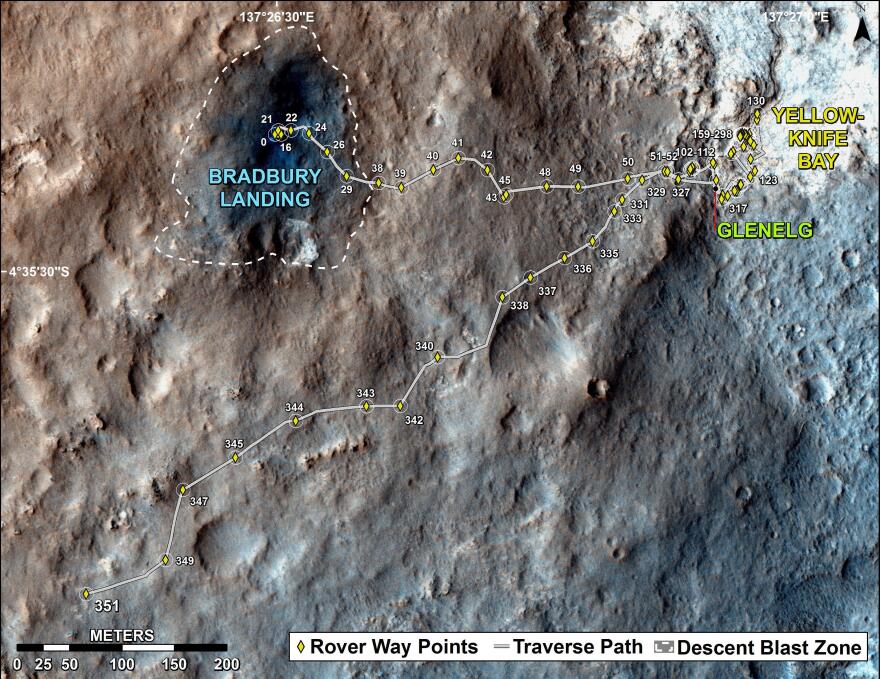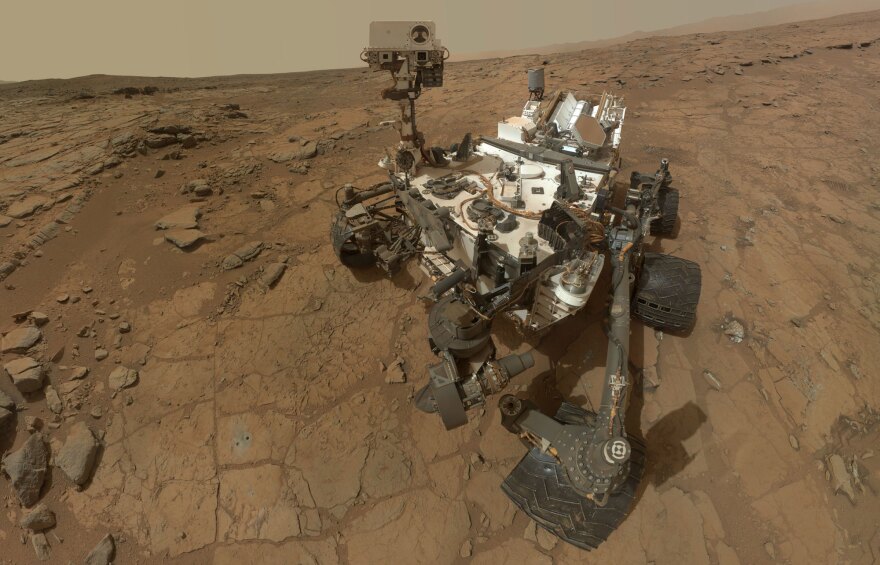Imagine winning the World Series, the lottery and a Nobel Prize all in one day. That's pretty much how scientists and engineers in mission control at NASA's Jet Propulsion Laboratory in Pasadena, Calif., felt one year ago when the 1 ton, six-wheeled rover named Curiosity landed safely on Mars.
Within minutes, the rover began sending pictures back to Earth. In the past year it has sent back a mountain of data and pictures that scientists are sorting through, trying to get a better understanding of the early climate on Mars.
The landing site in Gale Crater was chosen because it looked like a spot where ancient rivers once spilled out onto a plain. One of Curiosity's objectives was to answer the question whether such a place could once upon a time have been hospitable to life.
The answer seems to be yes. The rover drilled into a rock dubbed "John Klein" and performed a chemical and mineral analysis of what it was made of.

"The minerals that were present in this drilled sample were the kind that form only in the presence of water, and in fact form in the presence of water that's friendly to life," says Ashwin Vasavada, deputy project scientist for Curiosity.
The next question the rover will be trying to answer is: When was the water there? To do that, Curiosity has begun a 5-mile trek to the foothills of Mount Sharp, a 3.4-mile-high mountain in the center of Gale Crater. Vasavada says the exposed rocks at the base of the mountain should help scientists assign dates to Mars' watery past.
Even though the landing phase of the mission has been over for a year, the landing team's work has continued. NASA engineer and his team have been analyzing telemetry data the rover sent back while it was descending to Mars.

"We found that we landed more slowly than we anticipated. Now it's not that much more slowly — one or two inches a second more slowly than we anticipated — but maybe it's a mark of how sharp our pencil was that that's a big deal for us," Steltzner says. "When we went back and looked at why that was, we've concluded that there was a gravity anomaly where we landed."
The anomaly means the tug of gravity at the landing site is slightly less than it is for the rest of the planet. According to Steltzner, the possibility of such an anomaly hadn't been considered by the landing team. "And that's sort of where pride cometh before a fall," he says. "We felt that we knew something that clearly we didn't know well enough."
In this case, what they did know was more than enough to allow Curiosity to land safely on Mars.
Copyright 2020 NPR. To see more, visit https://www.npr.org. 9(MDAxNDQ2NDAxMDEyNzU2NzM2ODA3ZGI1ZA001))






